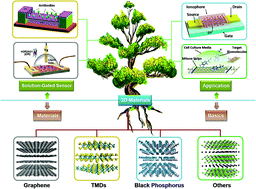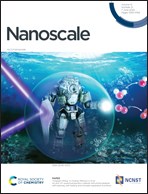Solution-gated transistors of two-dimensional materials for chemical and biological sensors: status and challenges
Abstract
Two-dimensional (2D) materials have been the focus of materials research for many years due to their unique fascinating properties and large specific surface area (SSA). They are very sensitive to the analytes (ions, glucose, DNA, protein, etc.), resulting in their wide-spread development in the field of sensing. New 2D materials, as the basis of applications, are constantly being fabricated and comprehensively studied. In a variety of sensing applications, the solution-gated transistor (SGT) is a promising biochemical sensing platform because it can work at low voltage in different electrolytes, which is ideal for monitoring body fluids in wearable electronics, e-skin, or implantable devices. However, there are still some key challenges, such as device stability and reproducibility, that must be faced in order to pave the way for the development of cost-effective, flexible, and transparent SGTs with 2D materials. In this review, the device preparation, device physics, and the latest application prospects of 2D materials-based SGTs are systematically presented. Besides, a bold perspective is also provided for the future development of these devices.

- This article is part of the themed collection: Recent Review Articles


 Please wait while we load your content...
Please wait while we load your content...